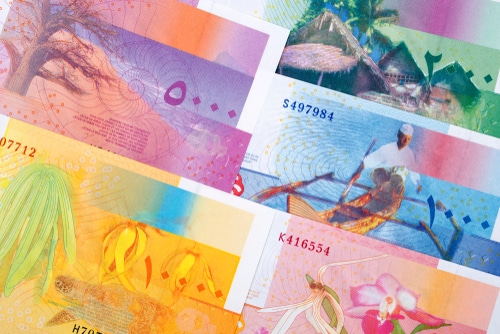The Comorian Franc (KMF) is more than just a means of exchange. It reflects the rich history and cultural identity of the Comoros, an archipelago in the Indian Ocean. Whether you’re planning to visit, invest, or simply enhance your understanding of global currencies, this guide will help you explore the essential aspects of the Comorian Franc. From its history and exchange rates to its role in the Comorian economy, we cover everything you need to know about this unique currency.
What is the Comorian Franc?
The Comorian Franc (KMF) is the official currency of the Union of the Comoros, a nation made up of four main islands and several smaller ones. Represented by the symbol “CF” or “KMF” in international financial transactions, it is subdivided into 100 centimes.
The Comorian Franc’s value is pegged to the euro (EUR), thanks to a monetary agreement between Comoros and France. This peg provides stability to the currency, making it relatively predictable compared to other currencies not tied to major international ones.
A Brief History of the Comorian Franc
The Comorian Franc was first introduced in 1925, replacing the French franc used throughout the archipelago. Initially, it was tied to the French franc, reflecting the Comoros’ close ties to France as a former colony.
The currency gained independence from the French franc in 1975 when Comoros declared independence. However, in 1994, the Comoros formalized its monetary arrangement with France under the Franc Zone, pegging the Comorian Franc to the euro after the French franc was replaced.
This connection has since helped protect the Comorian Franc from wild currency fluctuations, offering stability to the nation’s economy despite challenges such as reliance on agricultural exports and limited industrialization.
What Does the Comorian Franc Look Like?
Comorian Franc notes and coins are vibrant in design, reflecting the breathtaking natural beauty and culture of the Comoros.
- Banknotes: Recent series of banknotes feature denominations ranging from 500 to 10,000 Francs. Beautiful illustrations of marine life, tropical islands, and cultural symbols adorn these notes, making them not only functional but also artistic.
- Coins: The coins range from 1 to 100 Francs. They are practical for smaller transactions, with designs that honor the nation’s heritage and daily life.
The Comorian Franc and the Comoros’ Economy
The Comorian Franc is a key pillar of the nation’s economy, which is predominantly agricultural. The Comoros is known for its vanilla, cloves, and ylang-ylang exports, which play a significant role in the country’s GDP. Most international transactions are conducted in major currencies like the euro or US dollar, but the Comorian Franc is the primary currency for domestic trade.
The pegged exchange rate with the euro ensures a level of insulation for the economy, as it protects against extreme depreciation. However, because the economy relies heavily on imports for goods and services, inflation is a common challenge the Comorian Franc faces.
Exchange Rates and How to Use the Comorian Franc
If you plan to visit or transact using the Comorian Franc, understanding the exchange rate is crucial.
- Current Exchange Rate
The Comorian Franc is pegged to the euro at a fixed rate of 1 EUR = 491.96775 KMF. That said, conversion rates may slightly vary depending on service providers, but the euro peg helps ensure consistency.
- Where to Exchange Currency
Currency exchange can be easily done at major banks, exchange bureaus, or even hotels in Comoros. It’s advisable to carry smaller denominations as businesses in rural areas may not accept large bills or have sufficient change available.
- Using the Comorian Franc
The Franc is widely used across Comoros, from paying for fresh produce at the market to covering transportation and accommodation costs. Credit cards are not as commonly accepted, so having cash on hand is always a good idea.
The Role of the Comorian Franc in Everyday Life
For the people of the Comoros, the Comorian Franc is far more than a currency. It represents stability in a country rich in culture yet facing economic challenges. It connects communities, facilitating trade and supporting livelihoods across the islands.
Despite its economic limitations, the Comorian Franc holds its role as a symbol of the nation’s autonomy and resilience. For visitors, it’s a gateway to experiences that money alone can’t buy—from vibrant marketplaces to cultural festivals.
Important Tips for Visitors Using Comorian Francs
- Plan for Cash: While you may encounter ATMs in urban areas like Moroni, cash is essential for most transactions, especially outside the capital.
- Budget Accordingly: Goods and services in Comoros are generally affordable, but island-specific resources or imports, like bottled beverages, can carry premium pricing.
- Understand Small Denominations: Coins are widely used for small purchases, so familiarize yourself with the different denominations to make transactions smoother.
Why Should You Know About the Comorian Franc?
For business professionals, travelers, or anyone curious about global economics, understanding the Comorian Franc is a way to grasp the economic challenges and opportunities of small island nations. It highlights how tied relationships with larger economies, such as the Comoros’ link to France and the European Union, can impact currency stability and economic development.
This knowledge might also inspire more thoughtful investments or collaborations with the region. For instance, entrepreneurs could explore opportunities in sustainable agriculture or tourism within the Comoros.
Where to Learn More About Global Currencies
Exploring currencies like the Comorian Franc broadens our understanding of how culture and economics are intertwined across the world. To continue learning about unique currencies and how they shape nations, subscribe to our newsletter or follow our blog for the latest insights.
